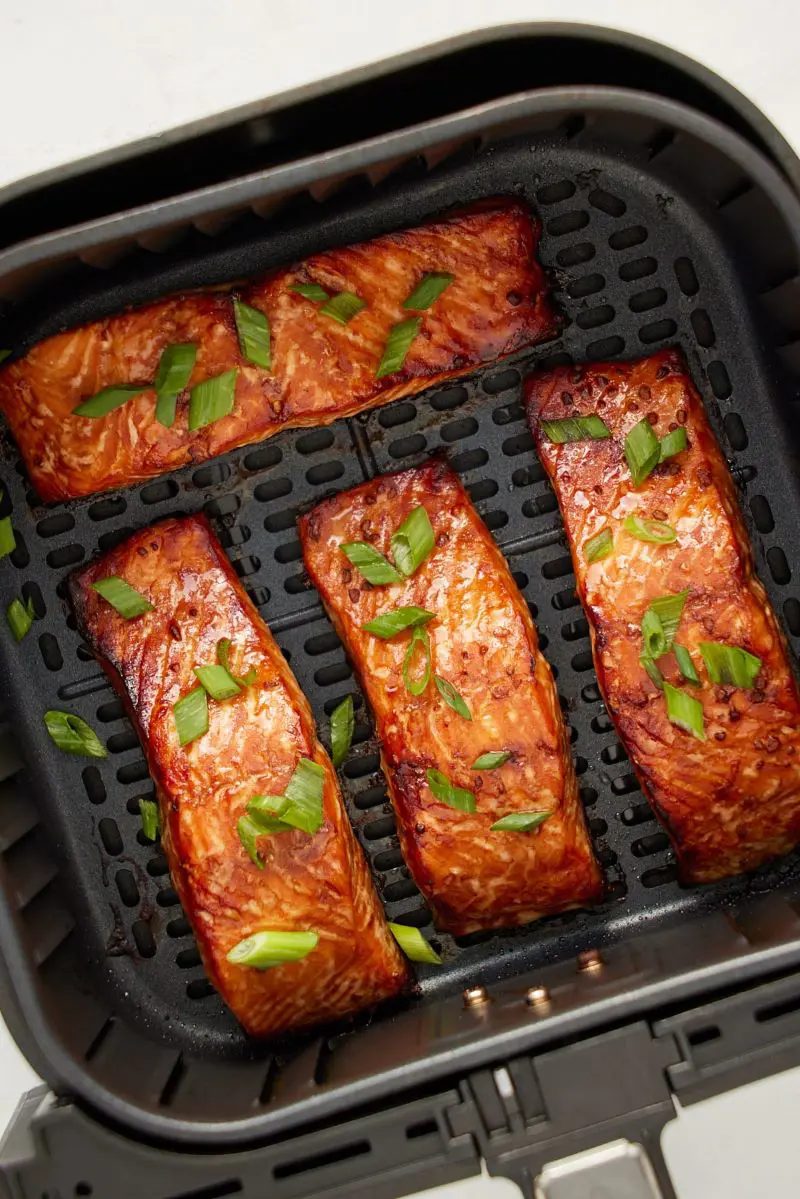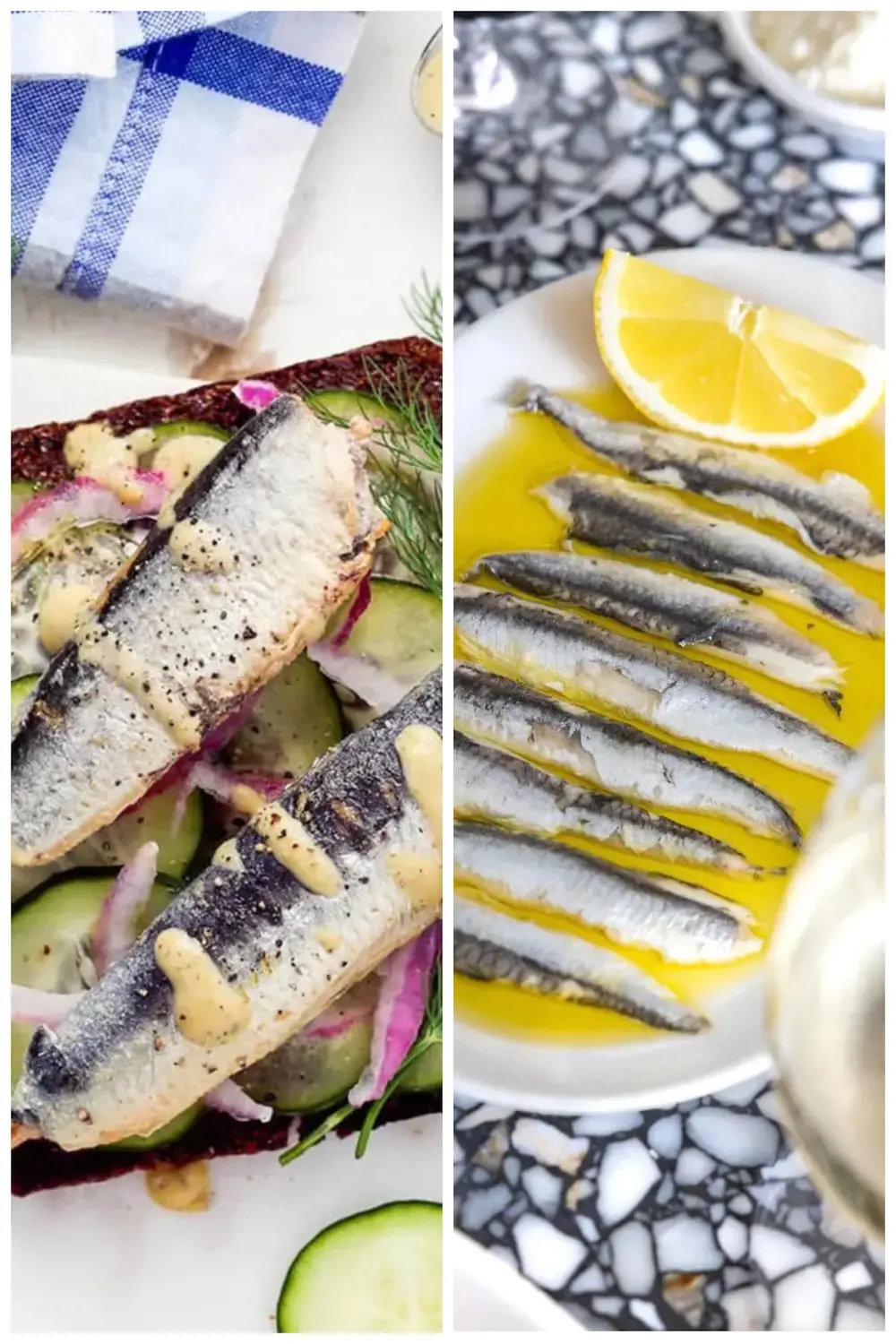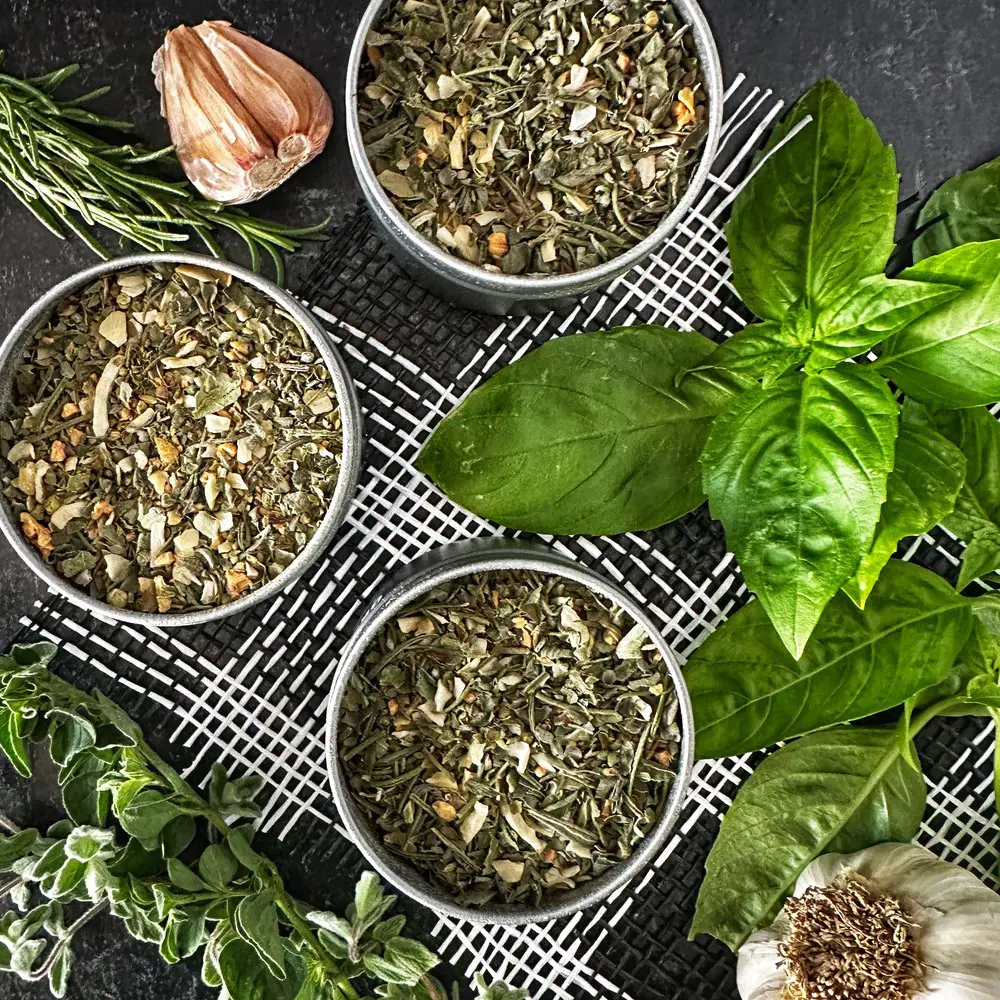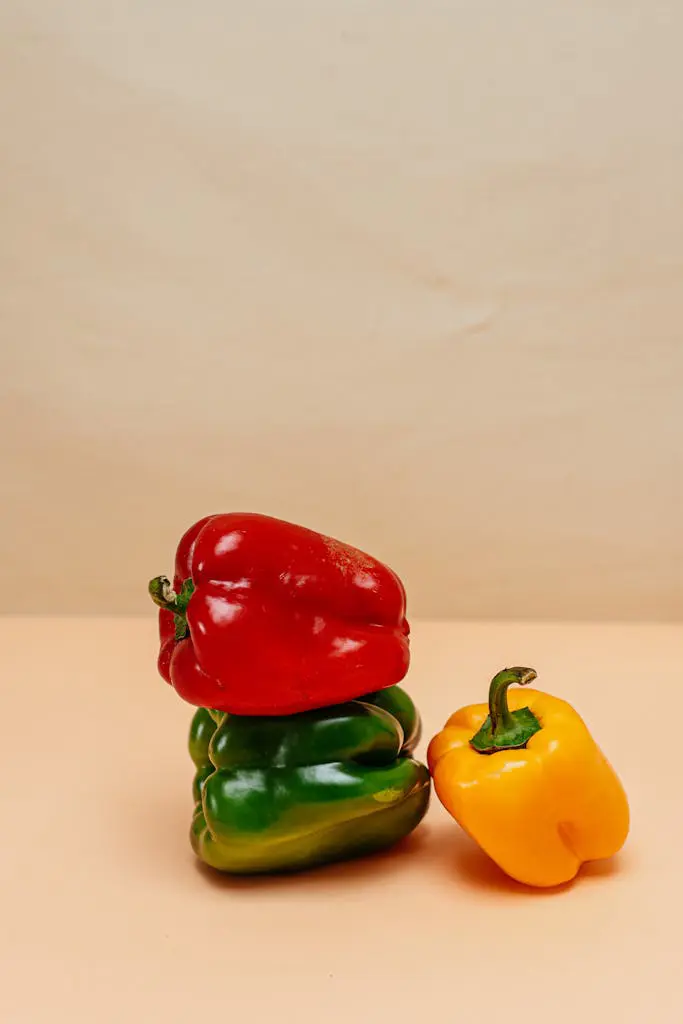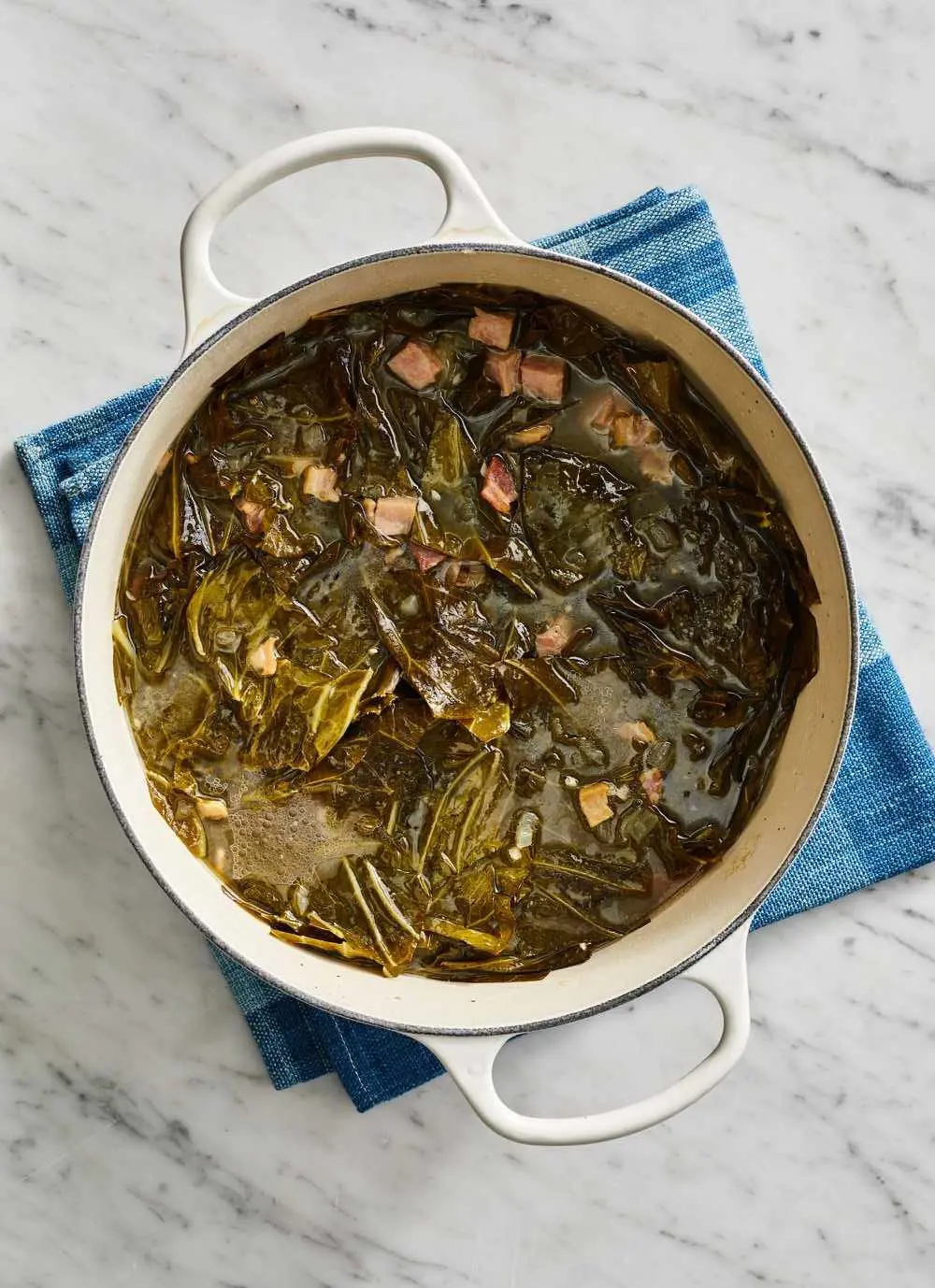3 Methods To Defrost Salmon Without Ruining It
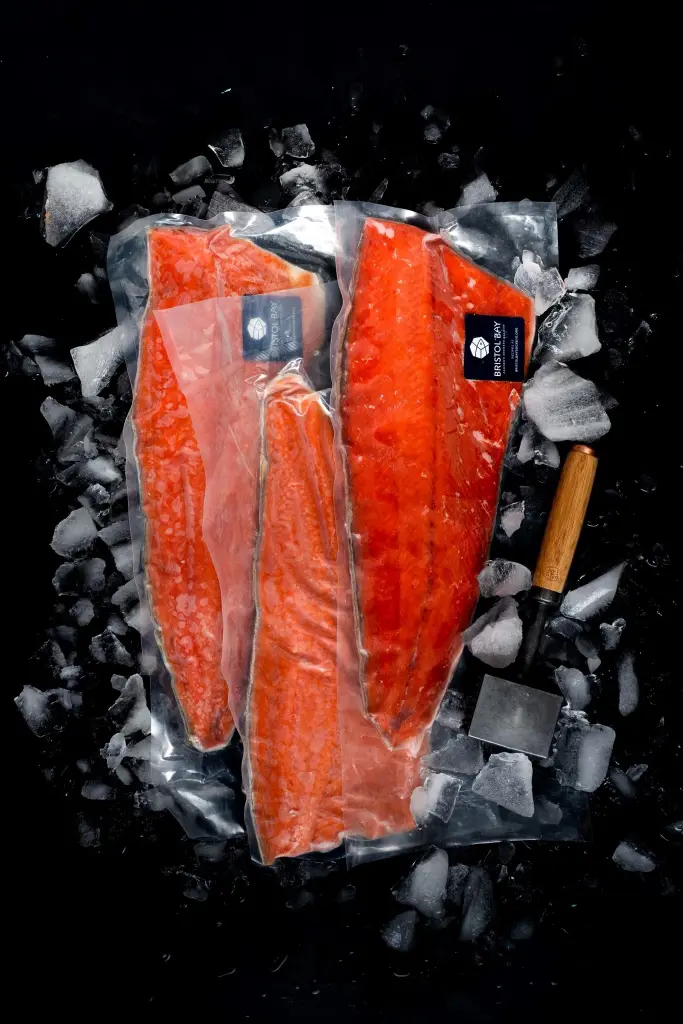
Salmon makes everyone delighted at dinnertime, and it's easy to see why. While fresh salmon from the store tastes wonderful, sometimes life gets too busy for shopping trips. That's when frozen salmon becomes your kitchen hero!
With the right defrosting tricks up your sleeve, frozen salmon can taste nearly as good as its fresh counterpart. The secret lies in knowing how to defrost salmon properly, keeping both safety and relish in mind.
How To Thaw Frozen Salmon
Before diving into the thawing methods, here's a useful trick: try bending your frozen fillet. If it stays rigid and straight, it needs more time to thaw.
When it's ready to cook, the fillet will bend easily in the middle – that's your signal that dinner prep can begin! Now, let's probe different thawing methods and see what works best for you.
How To Defrost Salmon In Refrigerator
You can thaw salmon without it being a mess. The refrigerator method is the safest and the way to defrost your fish, the texture and taste would not be affected. Below we tell you about this solid defrosting technique.
Step 1: Remove from the Freezer
Take your frozen salmon out of the freezer. If it’s store bought frozen salmon, check the package for specific thawing instructions. Several brands may require different standards for the packaging.
Choose a clean container with raised edges or a rimmed plate. This will catch any liquid that may drip during the thawing process and prevent cross-contamination in your fridge.
Step 2: Handle the Packaging
If your salmon is in vacuum-sealed packaging, you have two options:
- Remove it completely from the packaging and place it in your container
- Pierce the packaging several times with a fork to allow air circulation (check package instructions)
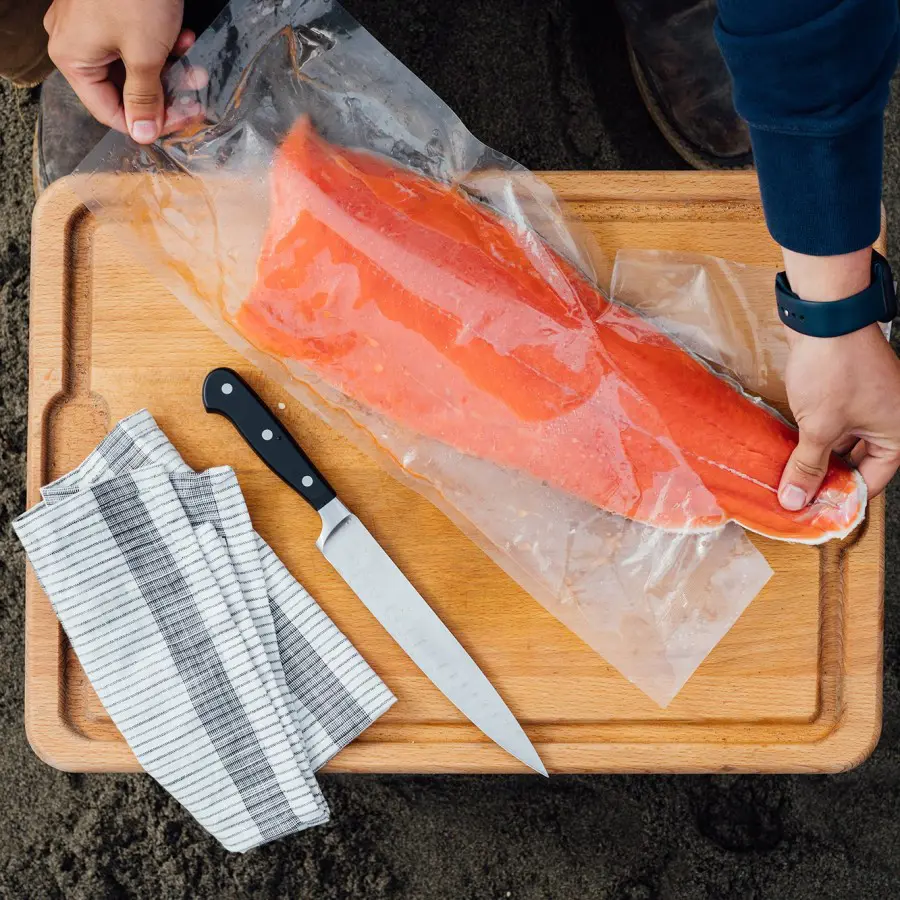
Step 3: Position in Refrigerator
Place the package of salmon onto the bottom shelf of your refrigerator. This hinders any feasible drips from contaminating other foods. Leave the salmon to thaw for 8-12 hours.
A 1-inch thick fillet typically needs about 12 hours. Thinner pieces may thaw faster.

Step 4: Prepare for Cooking
After the time has passed, check if the salmon is completely thawed by softly pressing the thickest part. It should be pliable and not feel icy or hard. Once thawed, remove the salmon from the container.
Pat it dry thoroughly with paper towels to remove any excess moisture before cooking delicious salmon recipes.

Pros:
- Safest method that prevents bacterial growth
- Keeps the salmon's texture and taste unchanged
- Hands-free - no watching or checking needed
- Thawed fish can be stored for an extra day
- Perfect for meal planning
- No risk of partially cooking the fish
Cons:
- Takes a long time (8-12 hours)
- Needs advance planning
- Takes up fridge space
- Not suitable for last-minute meals
- May drip and need container cleanup
- Slower than cold water or microwave methods
How To Defrost Salmon In Water
Quick, handy, and effective — defrosting salmon in cold water is the way to go if you’ve missed to thaw your fish overnight and need to defrost it quickly.
This technique usually involves about 1 – 2 hours and guarantees your salmon is protected at a safe temperature during the entire process.
Step 1: Remove Packaging
The first thing you need to do is take the frozen salmon out of its vacuum-sealed original packaging. If it isn’t already in a ziplock bag, then transfer it into one.
Always squeeze out as much air as possible from the bag, before sealing it up neat. It prevents any water from getting in and helps it maintain its texture.

Step 2: Prepare the Water Bath
Select a container that's large enough to hold your salmon piece completely. Fill this container with cold tap water. The water temperature is crucial here – it should be cold, not lukewarm or room temperature, to keep the salmon at a safe temperature while it thaws.
Step 3: Submerge the Salmon
Place your bagged salmon into the container of cold water. The bag might float, so you'll need to weigh it down. You can use a small plate or bowl to keep the salmon fully submerged. Ensure that the water completely covers the fish for even thawing.
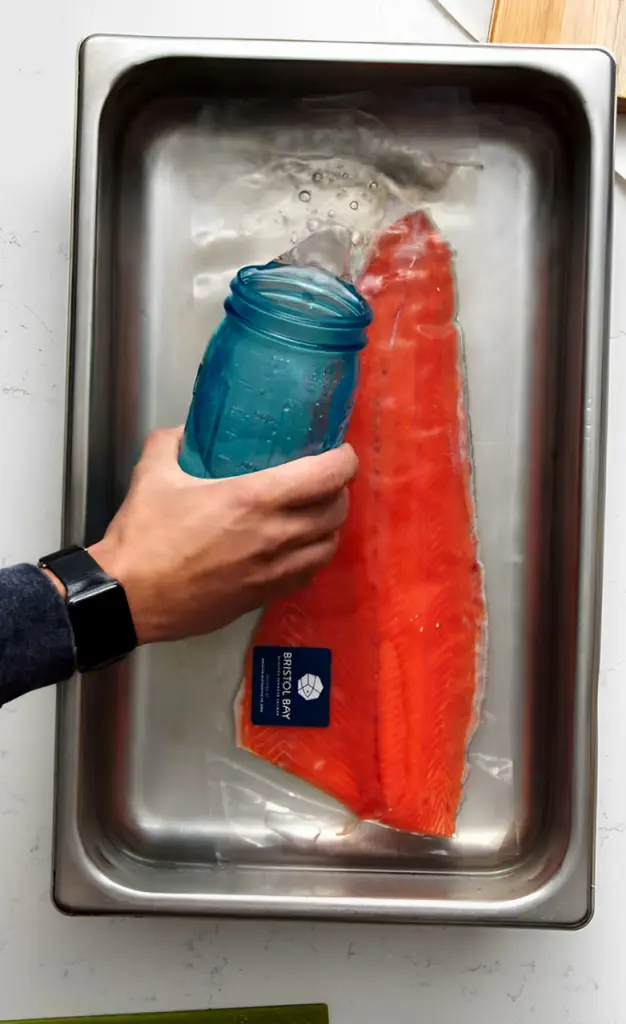
Step 4: Monitor and Change Water
Then set your timer for 30 minutes. As that timer goes off, check the salmon’s progress. Remove all the old water in the container and refill it with fresh cold water.
This step is important because it helps maintain a safe temperature. Continue this process, changing the water every 30 minutes until your salmon is completely thawed.

Pros:
- Much faster than a refrigerator thawing
- Requires minimal equipment
- Can be done last-minute
- Allows you to prep other ingredients while waiting
- Safe when done properly
- Maintains fish quality
Cons:
- Requires active monitoring
- Must change water every 30 minutes
- Takes up counter space
- Needs constant attention to timing
- Can't be left unattended
- Uses more water than other methods
How To Defrost Salmon In Microwave
When you're really short on time, the microwave method is your quickest alternative for defrosting salmon. This method typically takes just 2 to 4 minutes, but you'll need to cook your fish right away once it's thawed.
While it's super fast, you'll need to watch it carefully to prevent partially cooking the salmon.
Step 1: Remove the Packaging
Take your salmon out of its packaging and wrapping. Don't even think about microwaving it in the store packaging - it's not safe and can mess with your food. Throw away all plastic wrap and vacuum seals before you start.
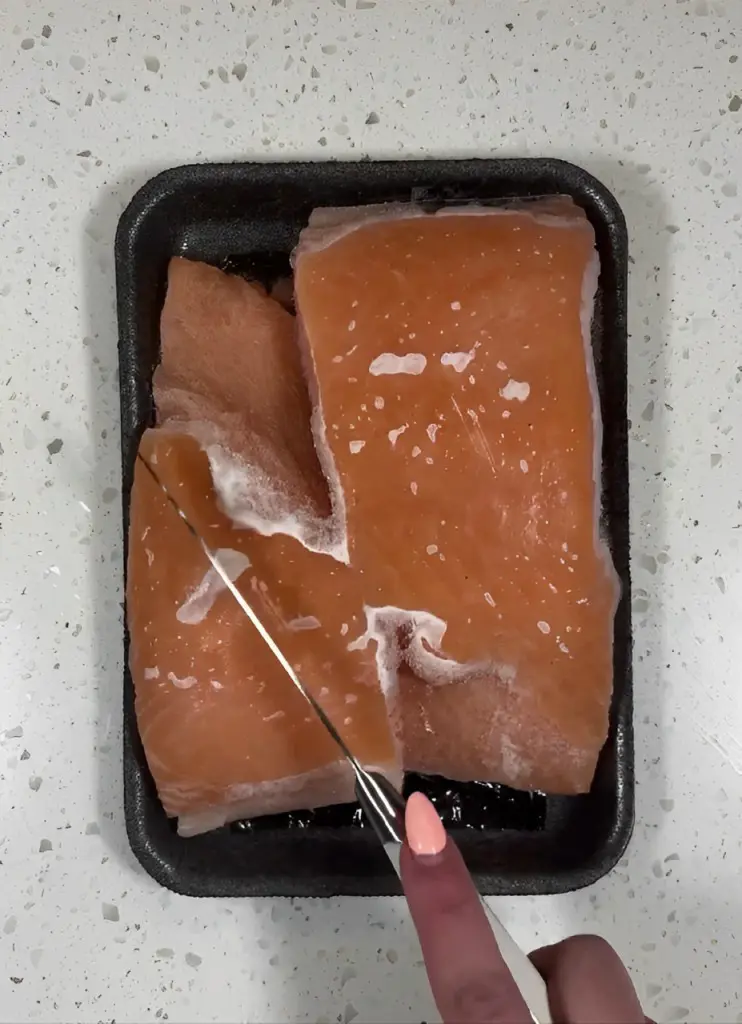
Step 2: Get Ready to Microwave
Grab a microwave-safe plate that fits your salmon nicely. A paper towel on top helps catch any splatter. Make sure the salmon sits flat on the plate - you don't want any parts hanging off the sides.
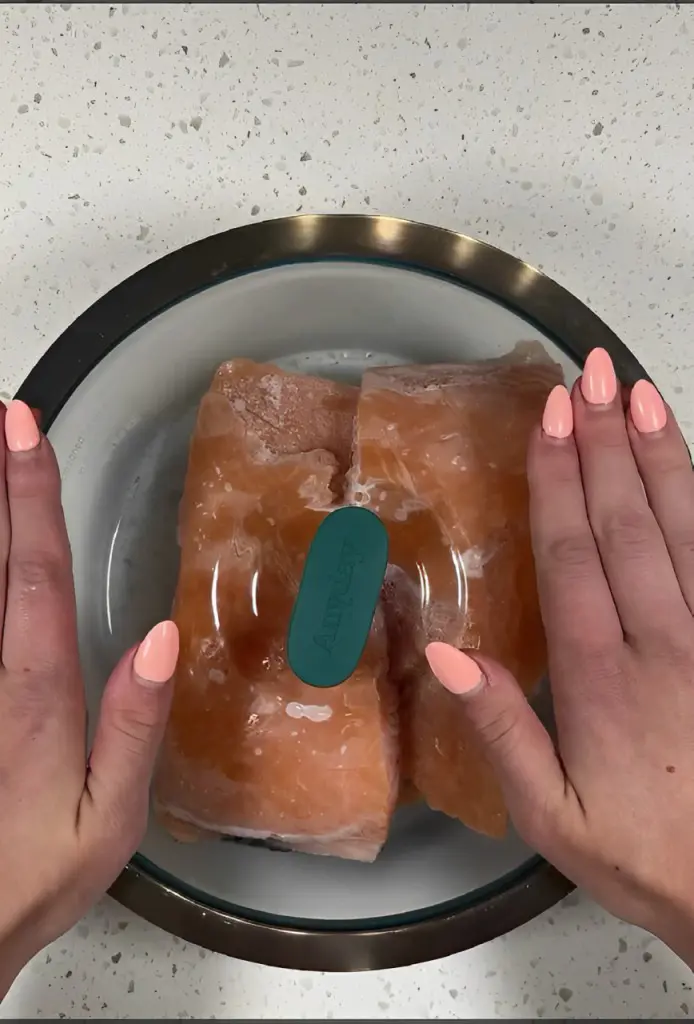
Step 3: Pick Your Settings
Look for the defrost button on your microwave - it might seem like a snowflake. Type in how many ounces your salmon weighs. No defrost button? Just turn your power down to 30%.
Every microwave works a bit diversely, so you might need to play around with the timing.

Step 4: Watch It Closely
Start defrosting and keep an eye on things. Figure about 2 minutes for every 4 ounces of fish. Give it a gentle poke every now and then - you want it cold but not rock hard. If you see any parts turning white, hit stop right away because that means it's starting to cook.
Pros:
- Ultra-fast defrosting time
- Perfect for last-minute meals
- No advance planning needed
- Simple process
- Doesn't require extra equipment
- Works well for small portions
Cons:
- Risk of partially cooking the salmon
- Requires careful monitoring
- Can leave fishy smells in microwave
- May cook unevenly
- Must cook immediately after thawing
- Not ideal for large portions
- Quality might not be as good as other methods
- Can dry out the edges
How Long Does It Take To Defrost Salmon
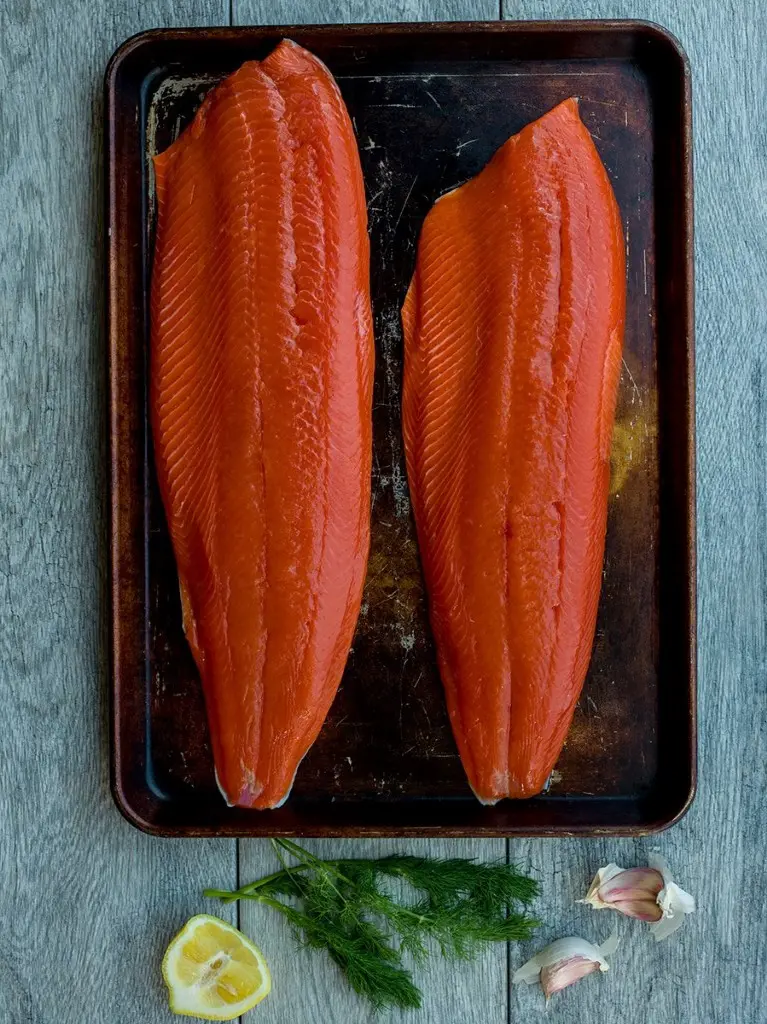
Defrosting salmon properly can make all the difference between a perfectly cooked meal and a disappointing dinner. The timing of the various thawing methods not only guarantees that the food is safe but helps keep the fish’s delicate texture and wonderfully flavourful.
Whether working with a whole side of salmon or individual portions, there's a defrosting method to suit every schedule and situation.
1. In the Refrigerator
- Time: 8 to 12 hours
The refrigerator method stands as the gold standard for thawing salmon. A timeline of 8 to 12 hours allows the fish to defrost gradually and evenly in a controlled environment.
Placing it in the fridge the night before ensures that perfectly thawed salmon is ready for dinner the next day. This patient approach preserves the natural moisture and texture of the fish, making it ideal for any cooking method planned.
2. Cold Water
- Time: 1 to 2 hours
For those caught in a time crunch, the cold water method offers a reliable middle-ground solution. Taking about 1 to 2 hours total, this approach requires submerging the sealed fish in cold water.
The process needs attention every thirty minutes for water changes but delivers consistently thawed salmon that's ready for cooking. This method strikes a balance between speed and maintaining the fish's quality.
3. The Microwave
- Time: 2 to 4 minutes
Microwave method is the quick fix method which take 2 to 4 minutes defrosting time. Not an ideal approach, but it works well when time is against you.
The trick here is to use the defrost setting and closely watch the process because it can accidentally cook. In texture, the result may be slightly different than slower methods, but is still viable for getting that last-minute meal dinner on the table.
Tips To Thaw Salmon Perfectly
Got frozen salmon? Great! Let's turn that frozen block into something you can cook. While it takes a bit of time, doing it right means tastier, safer fish for your next meal. Here are simple steps to thaw your salmon:
- Put it in the fridge. Keep it wrapped up and place it on the bottom shelf. Wait about 8 hours or leave it overnight. Easy!
- In a hurry? Try the cold water trick. Keep your salmon in its sealed bag and cover it with cold water. Switch the water every 30 minutes. You'll have thawed fish in about an hour.
- Don't leave it on the counter. It might make you sick.
- Stay away from hot water. Your salmon will end up weird - cooked outside but frozen inside.
- Skip the microwave. Trust us - your salmon will turn out much better if you don't use it.
- Once it's thawed, grab some paper towels and pat it dry. This helps it cook up nice and tasty.
- Use it within two days of thawing. The sooner, the better!
- Plans fell through? No problem. If you thawed it in the fridge, you can freeze it again.
- Want to add sauce or spices? Do it in the fridge, not on the counter.
- Know it's ready when the salmon feels cool and bends easily. No ice chunks should be hiding inside.
A little planning today means better salmon tomorrow. Whether you're dreaming of crispy skin or tender flakes, starting with properly thawed fish makes all the difference. Label your salmon with dates before it hits the freezer.
How Long Does Salmon Last In Freezer?

Preserving salmon in your freezer is the equivalent of having a ready-made meal ready for you. And how long can it really stay there? So let’s break everything you need to know about keeping your salmon safely and tasty.
Good salmon stays at its best for about 2 months in the freezer. That's when you'll get the most flavor and the nicest texture. Want to keep it longer? You can stretch it to 6 months, but be ready for small changes.
The fish might not be as firm, and its rich taste might fade a bit. Still safe to eat? Yes. As delicious as fresh? Maybe not.
Thawing needs special attention. Once you move your frozen salmon to the fridge, a countdown begins. You've got 1-2 days to cook it. No shortcuts here - this timeline matters for your safety. If your salmon is thawing, plan your meals ahead of time to make sure there is no squander.
How To Tell If Salmon Is Bad?
If you know what to look for you can easily spot bad salmon. Fresh salmon should make your mouth water, not your nose wrinkle. The first red flag is bad smells, bad strong fishy smells or ammonia smells.
Take a good look at the color too. Healthy salmon shows off a bright orange or pink. If you see dark spots, white patches, or dull gray areas, something's wrong. Slimy coating? That's another sign to say goodbye to your fish.
Smart storage makes all the difference. Wrap your salmon well before freezing - air is your enemy here. Double-wrap it if you can. Label each package with the date - this simple step saves you from guessing games later. Keep your salmon in the coldest part of your freezer, usually at the back.
Some people try to save iffy-looking salmon by cutting away bad spots. Don't risk it. Food poisoning isn't worth saving a few dollars. When salmon goes bad, it needs to go in the trash. Your nose and eyes are your best food safety tools - trust them.
Remember: frozen doesn't mean forever. But with proper storage and regular checks, your salmon can stay good for months. Keep it cold, keep it wrapped, and always trust your senses when deciding if it's still good to eat. Good salmon makes great meals - but only when it's stored right and used in time.
Frozen Salmon Recipes To Try
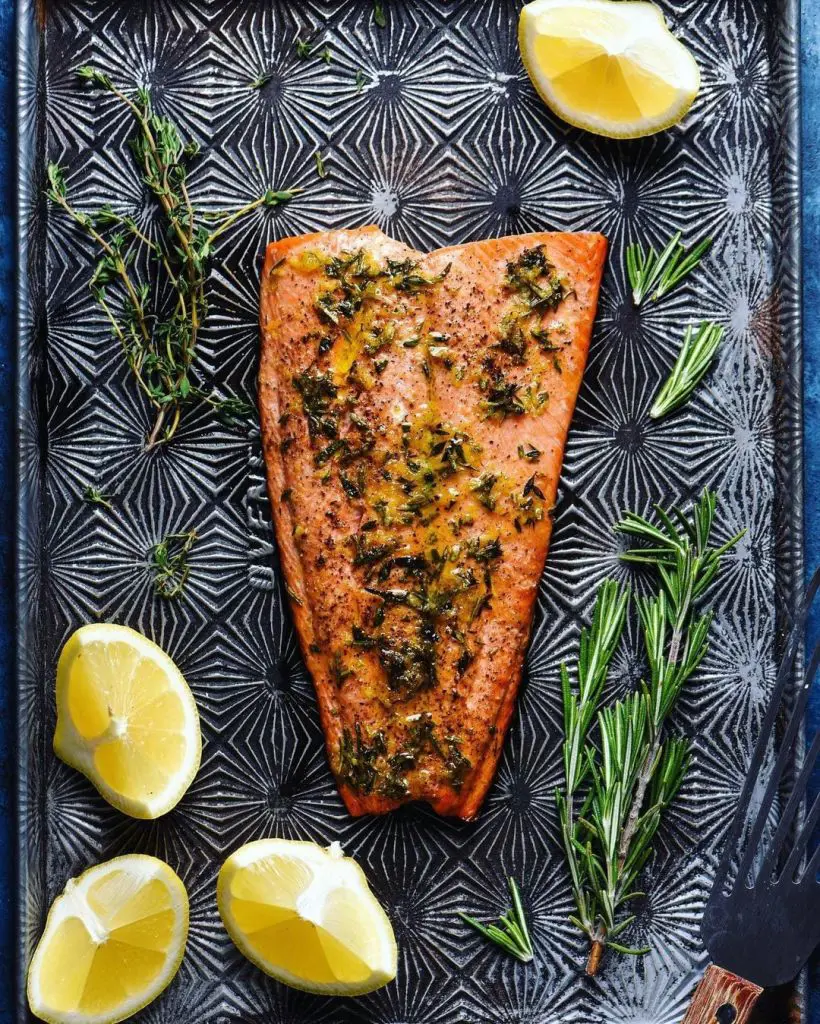
Got salmon in your freezer? You're in luck! This fish can turn into so many delicious meals. Let's explore some mouth-watering ways to cook your salmon, from quick everyday dinners to special meals that will wow your family.
1. Quick and Crispy Pan-Seared Salmon
The simplest meals taste the best sometimes. This 15 minute wonder doesn’t require any sauces besides salt, pepper, and butter.
But here's what makes it special: Basically, top it with a fresh green sauce that you made with yogurt, lemon juice, and green herbs, such as parsley and chives. To that, add a simple salad with lettuce, carrots, crisp radishes and sweet apple slices.
2. Easy Sheet Pan Dinner
Want dinner ready in 20 minutes with hardly any cleanup? Try this one-pan meal. Spread homemade pesto (made with spinach, dill, and almonds, and lemon) on your salmon.
Add squash rings around it, and place it in the oven. The squash gets golden brown while the salmon stays juicy. Toss a green salad on the side, and dinner's done!
3. Sweet and Zesty Salmon with Pineapple
Here's something diverse: fresh pineapple salsa with salmon. A great way to mix: chunks of sweet pineapple, red pepper, garlic, fresh cilantro and a little squeeze of lime.
Put salmon under the heat of a hot pan until it’s golden on both sides. The warm fish with cool, sweet salsa creates an amazing combination that might become your new favorite.
4. Gentle Lemon-Poached Salmon
Looking for something light and elegant? Try poaching your salmon. Make a flavorful bath of white wine, lemon slices, bay leaves, and black peppercorns. Let your salmon swim in this for just 5 minutes.
While it's cooking, stir together a creamy sauce with sour cream, cucumber, red onion, and fresh herbs. It's simple but tastes like restaurant food!
Each recipe brings something special to your table. The pan-seared version is perfect for busy nights. The sheet pan dinner makes cleanup a breeze. The pineapple salsa adds a tropical twist. And the poached salmon? That's your fancy dinner made easy.
Recent posts
Kitchen Tips
Kitchen Tips
Best Ways To Reheat Salmon
Salmon is a delightful fish that is consumed by many people. The reason is its flavors and nutritional benefits. Whether be it a normal dinner night or any occasion, you will find salmon on the plate. Having leftover salmon makes you think how ...
Kitchen Tips
Sardines vs Anchovies: What Sets These Pungent Fish Apart?
Sardines and anchovies are both types of small, oily fish that are widely used in food around the world. Both sardines and anchovies are marine or saltwater fish. They are commonly found in coastal waters and are part of the vast array of species tha...
Kitchen Tips
14 Heavy Cream Substitutes For Cooking
Heavy cream, also known as heavy whipping cream, is a luxurious dairy product celebrated for its rich and velvety texture. The cream is made by skimming the fat content from fresh cow's milk with about 36-40% milk fat. However, there are severa...
Kitchen Tips
20 Best Italian Herbs And Seasoning Spices
Italian cuisine is known for its simplicity and the use of locally produced, high-quality, fresh ingredients. One of the reasons behind this is the skillful use of herbs and spices to enhance flavors and create diverse taste profiles. Depending on wh...
Kitchen Tips
15 Butter Replacement Products When You Run Out Of It
Butter makes everything better. It is a kitchen staple that can be found in pretty much everyone's pantry. From baking to sauteeing, we use this ingredient in the kitchen pretty much every day. So, it is natural for us to look for alternatives for da...
Kitchen Tips
How Do You Freeze Bell Peppers
We’ve all had that moment of going to the store, purchasing too many bell peppers just to use for a recipe. Once your vivid veggies are peeled and placed in the fridge, they’ll last a few days, but they can spoil fast. Fortunately, you ca...
